Modern landscaping is all about clean lines, minimalism, and bold shapes and nothing delivers that aesthetic quite like desert plants. These sculptural wonders are not only drought-tolerant and low-maintenance, but they also serve as living art pieces that instantly elevate the look of any outdoor space. Whether you’re designing a xeriscape, rooftop retreat, or simply adding architectural flair to your garden, these 10 standout desert plants will give your landscape a contemporary edge with natural drama.
1. Agave americana (Century Plant)

The Century Plant is a showstopper with its massive, symmetrical rosettes of thick, blue-gray leaves edged with sharp spines. Its bold form brings an instant sculptural impact to any modern garden. While slow-growing, it makes a lasting impression and requires minimal watering. When it blooms once in its lifetime it sends up a towering flower spike up to 20 feet tall. Ideal for focal points or containers, Agave americana thrives in full sun and well-drained soil.
2. Aloe vera

Aloe vera isn’t just known for its healing gel it’s also a striking desert plant that brings both texture and function to modern gardens. Its fleshy, sword-like leaves form neat rosettes with a graphic appeal, and its tall flower stalks add vertical interest when in bloom. Aloe thrives in full sun to partial shade, tolerates drought beautifully, and grows well in containers or rock gardens. It pairs wonderfully with gravel, stone, or minimalist concrete settings.
3. Dasylirion wheeleri (Desert Spoon)
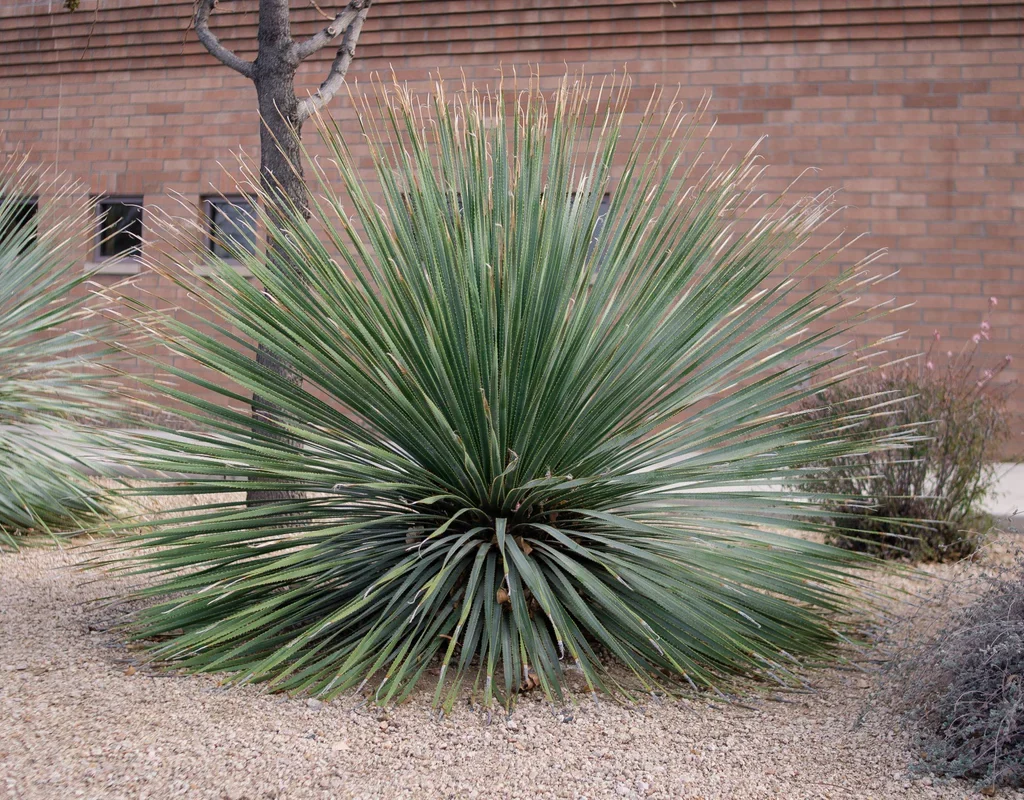
Also known as Desert Spoon or Sotol, this plant features a dense, spherical form made up of narrow, spiny, silver-green leaves that radiate like a sunburst. It brings a dramatic, sculptural feel to dry landscapes while also being extremely drought-hardy. The long, slender flower spike that emerges from the center can reach up to 15 feet, adding a touch of surreal height. It’s perfect as a specimen plant in a modern, minimalist garden.
4. Opuntia (Prickly Pear Cactus)
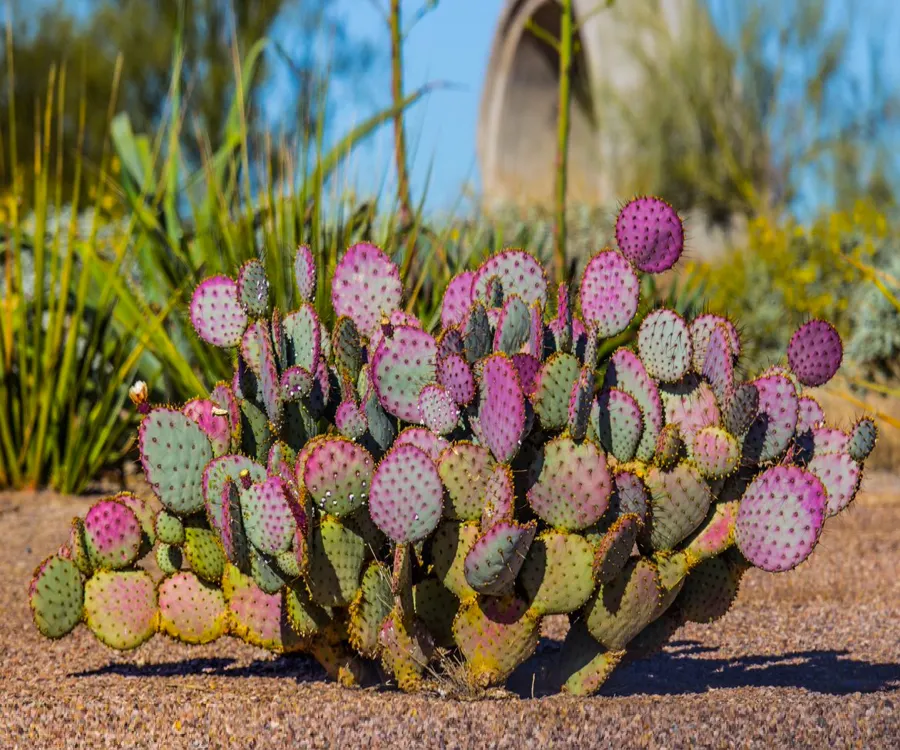
With its broad, paddle-shaped segments and colorful seasonal blooms, the Prickly Pear is a bold choice for sculptural appeal. Its form is both wild and orderly, making it ideal for a modern desert look. Depending on the variety, it can produce yellow, red, or even magenta flowers, followed by edible fruit. Opuntia is incredibly resilient and can tolerate extreme heat, poor soil, and drought. It adds a touch of Southwest flair and thrives in full sun.
5. Euphorbia rigida (Gopher Plant)
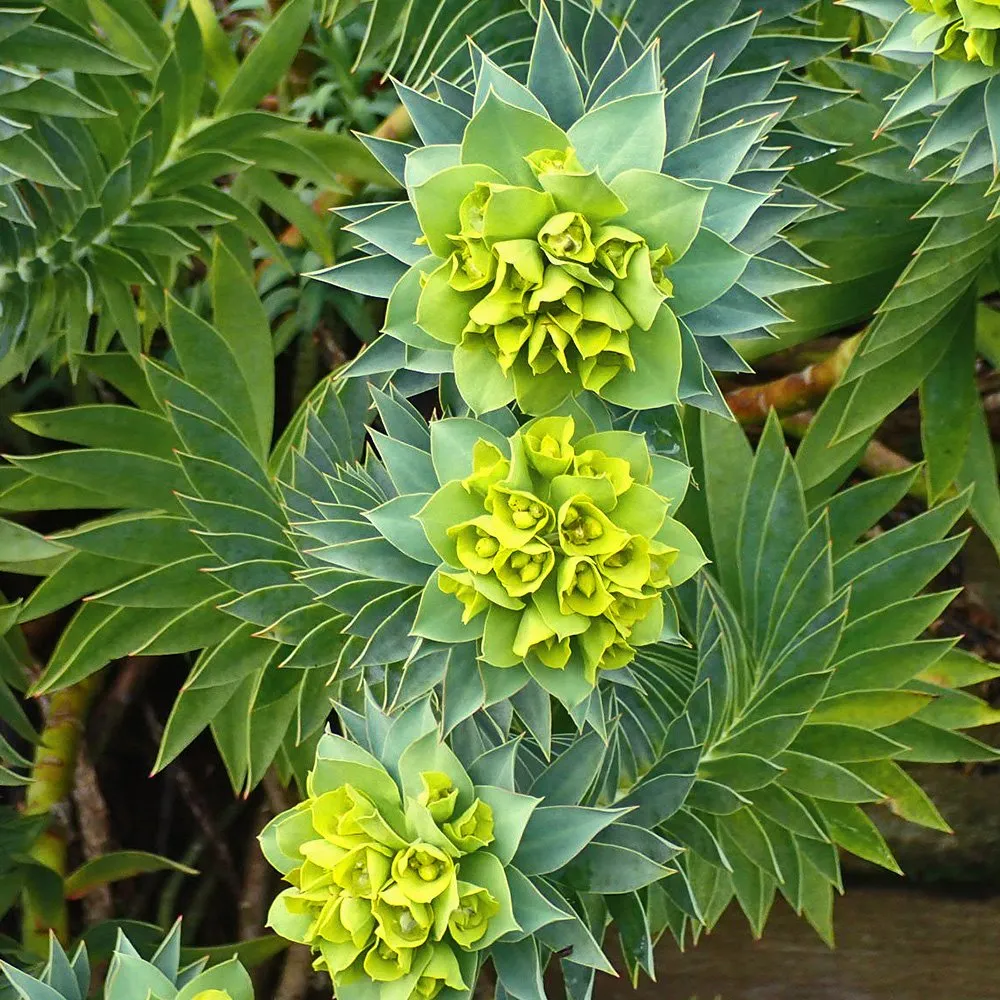
For a striking combination of color and structure, Euphorbia rigida is a standout. Its spiral, blue-green stems form tight mounds that contrast beautifully with the bright yellow bracts that appear in early spring. It thrives in dry, rocky soil and requires almost no maintenance. The plant’s modern, architectural silhouette makes it a natural fit for contemporary gardens, especially when paired with gravel mulch or stone borders. It’s also deer-resistant and pollinator-friendly.
6. Yucca rostrata (Beaked Yucca)

This tree-like yucca offers a bold, symmetrical globe of slender blue-green leaves atop a thick trunk, making it one of the most eye-catching sculptural plants in desert landscaping. Its clean lines and unique form make it ideal for minimalist designs. Yucca rostrata is incredibly hardy, withstanding intense heat, drought, and even occasional frost. Over time, it can reach heights of 10–15 feet, creating a stunning focal point or framing feature in the landscape.
7. Ferocactus (Barrel Cactus)
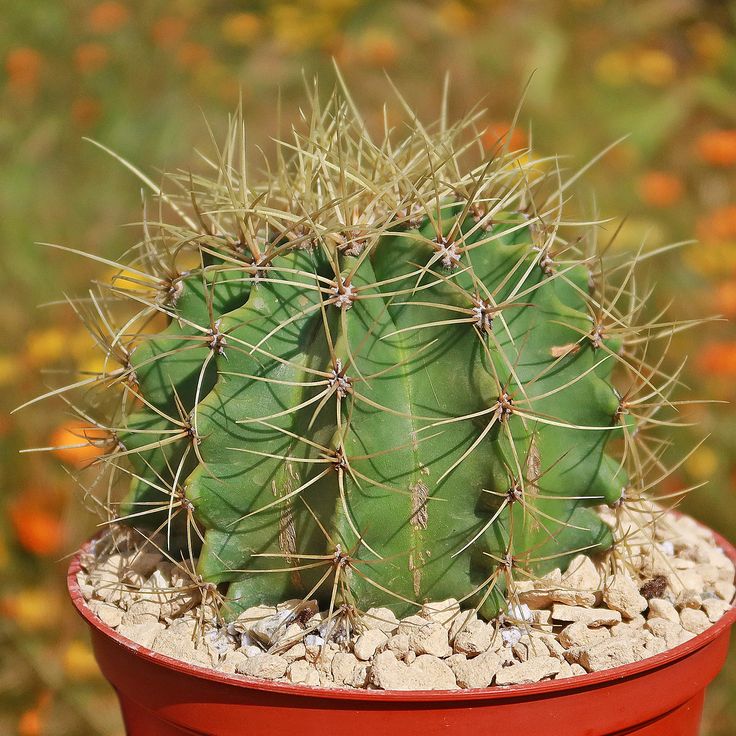
Compact but powerful, Barrel Cacti like Ferocactus are known for their rounded, ribbed shape and vivid spines that range from golden yellow to fiery red. These low-profile plants are ideal for clustering or dotting among gravel beds. Despite their slow growth, they add an immediate sense of rugged beauty and structure. During the summer, they bloom with vibrant flowers at the crown, making them as colorful as they are bold. Perfect for patios or foreground plantings.
8. Hesperaloe parviflora (Red Yucca)
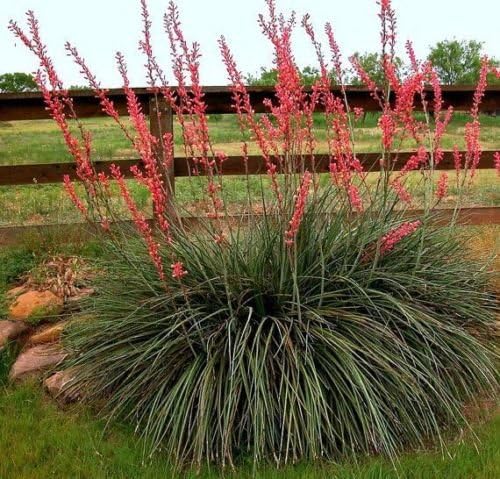
Red Yucca delivers year-round architectural form with its long, slender, arching leaves and tall flower stalks bearing tubular red or coral blooms. Though not a true yucca, it has the same toughness and visual drama. It thrives in full sun and tolerates drought, making it perfect for xeriscapes and rock gardens. The hummingbird-attracting flowers and low maintenance needs make it a modern landscape favorite, especially when planted in mass groupings or along pathways.
9. Agave victoriae-reginae (Queen Victoria Agave)

This compact agave is a geometric marvel. With its tight, dark green rosette and white markings, it looks almost too precise to be real perfect for modern gardens focused on form and symmetry. Agave victoriae-reginae is slow-growing and low-profile, ideal for containers, borders, or as a solitary specimen against gravel. It tolerates full sun and thrives on neglect, adding elegance and architectural grace to even the smallest spaces.
10. Ponytail Palm (Beaucarnea recurvata)

Though not a true palm, the Ponytail Palm makes a bold, artistic statement with its bulbous base and cascading, strap-like leaves. It’s drought-tolerant thanks to its swollen trunk, which stores water, and it works beautifully in both containers and desert gardens. Its whimsical, sculptural appearance makes it a standout in minimalist and modern designs, especially in courtyards or entryways. It prefers bright light and well-draining soil but is surprisingly low-maintenance and forgiving.

